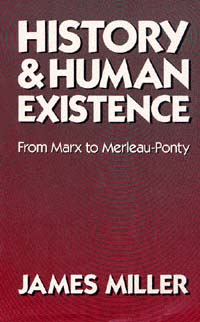NRL joins Airborne and Satellite Investigation of Asian Air Quality (ASIA-AQ)
IMAGE:
IMAGE: OVERVIEW OF KEY FEATURES THAT WILL INFLUENCE METEOROLOGY DURING THE JANUARY-MARCH SAMPLING PERIOD OF ASIA-AQ. BLACK CIRCLES ARE THE AIRBORNE SAMPLING SITES FOR ASIA-AQ. THE ORANGE BOX INDICATES THE OBSERVING DOMAIN FOR GEMS. THE BACKGROUND SHADED IMAGE IS THE ANNUAL AVERAGE NO2 FROM TROPOMI. THE LOCATION OF EACH ATMOSPHERIC COMPONENT IN THIS DIAGRAM IS AN EXAMPLE AND VARIES IN REALITY. (U.S. NAVAL RESEARCH LABORATORY)
view moreCREDIT: U.S. NAVAL RESEARCH LABORATORY
WASHINGTON – U.S. Naval Research Laboratory (NRL) meteorologists, in partnership with NASA, will join a team of international scientists to participate in the Airborne and Satellite Investigation of Asian Air Quality (ASIA-AQ) experiment beginning on February 2.
NRL’s collaborators, David Peterson, Ph.D., meteorologist, Theodore McHardy, Ph.D., American Society for Engineering Education postdoctoral researcher, Nicholas Gapp, Science Applications International Corporation and Lauren Porter, STEM Student Employment Program, will lead critical weather forecasting efforts for the duration of the experiment.
In partnership with team members at the University of California, Los Angeles (UCLA), NRL will provide daily briefings for the science and flight planning teams summarizing meteorology, air quality and atmospheric composition forecasts. This information will identify opportunities for data collection, including airborne measurements of many local, remote, persistent, and episodic sources of pollution.
“ASIA-AQ is an exciting opportunity to investigate how different climates and weather patterns influence periods of hazardous air quality and reduced visibility in several regions of eastern Asia.” said Dr. Peterson. “Beginning in the Philippines, each phase will last for two weeks then move to South Korea, Malaysia and conclude in Thailand.”
The primary goal of ASIA-AQ is to improve understanding of air quality in and around several Asian megacities by evaluating the factors controlling variability in daily air quality. The comprehensive study will involve South Korea’s Geostationary Environment Monitoring Spectrometer (GEMS) which measures hourly to provide a new view of air quality conditions from space that both complements and depends upon ground-based monitoring efforts of countries in its field of view. To aid in the validation and interpretation of GEMS observations, a network of ground-based remote sensing instruments (Pandora spectrometers) is being established across the GEMS domain. Pandora spectrometers can provide continuous information on the atmospheric column trace gas amounts of compounds.
NASA will contribute two research aircraft to the study, with flights planned over urban and marine environments in five countries in eastern Asia. ASIA-AQ flights will be conducted in full partnership with NRL and local scientists and environmental agencies responsible for air quality monitoring and assessment. These partners will contribute to the design of the flight sampling strategies, participate in the execution of the study, and be involved in the analysis of observations collected.
Aircraft observations provide invaluable context to the satellite and ground-based perspectives that are used more routinely to inform air quality models for both forecasting and identification of specific sources of pollution. Satellites and ground monitors focus on only a small subset of relevant atmospheric constituents. For a more complete understanding, detailed atmospheric composition measurements throughout the lower atmosphere are needed to understand how emissions, chemistry and meteorology combine to affect ozone and particulate pollution.
ASIA-AQ will be able to fully harness the combination of multi-perspective observations (satellite, ground, and aircraft) and models to improve understanding of the factors controlling air quality. This calls for an international collaborative effort that includes air quality scientists, government officials, and monitoring agencies working together.
“We look forward to working with weather forecasters and air quality scientists in the ASIA-AQ host countries to build collaborations and broaden the impact of our work.” said Peterson.
After the deployment, NRL will continue to support the aircraft measurement teams and the atmospheric simulations done by ASIA-AQ scientists by providing information on how ASIA-AQ measurements were influenced by specific weather patterns. NRL will use data collected during ASIA-AQ to evaluate Navy modeling applications in eastern Asia, with the goal of improved forecasts for hazardous visibility conditions that account for potential feedback of airborne pollutants on weather.
About the U.S. Naval Research Laboratory
NRL is a scientific and engineering command dedicated to research that drives innovative advances for the U.S. Navy and Marine Corps from the seafloor to space and in the information domain. NRL is located in Washington, D.C. with major field sites in Stennis Space Center, Mississippi; Key West, Florida; Monterey, California, and employs approximately 3,000 civilian scientists, engineers and support personnel.
For more information, contact NRL Corporate Communications at (202) 480-3746 or nrlpao@nrl.navy.mil.
METHOD OF RESEARCH
Data/statistical analysis



